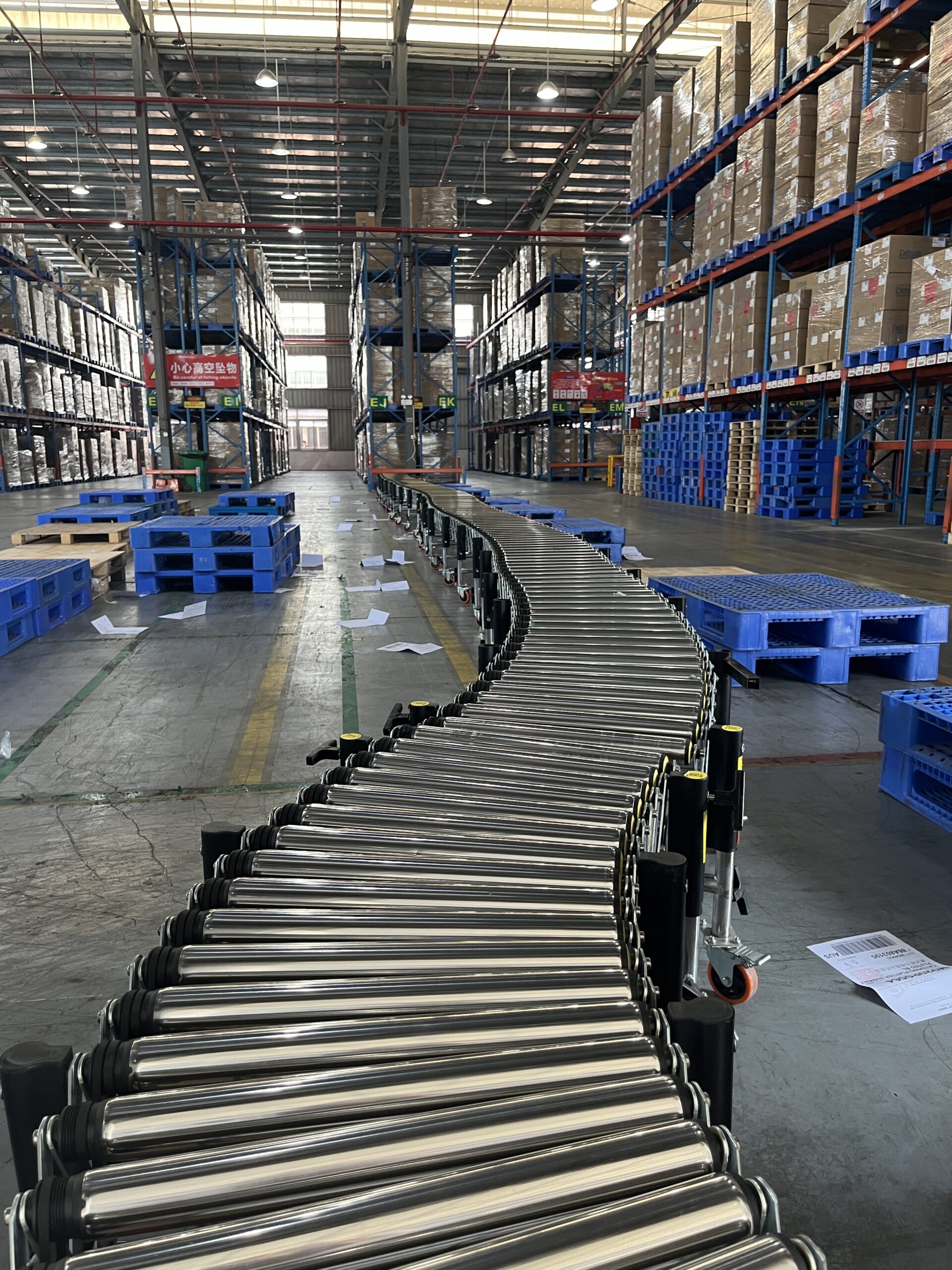Powered Rubber Roller Conveyor Manufacturer
Home > Roller Conveyor > Powered Rubber Roller Conveyor
Watch heavy bagged materials glide smoothly along production lines without slipping, sliding, or jamming—rubber roller conveyors make this reliable transport possible through specialized grip technology.
Our Powered Rubber Roller Conveyor Products
560 mm
1100 mm
120 kg/m
Flat-bottomed Goods
Bagged Goods
Watch heavy bagged materials glide smoothly along production lines without slipping, sliding, or jamming—rubber roller conveyors make this reliable transport possible through specialized grip technology. Unlike standard metal rollers that struggle with irregular packages, these advanced systems feature rubber-covered surfaces creating superior friction between transport mechanisms and challenging loads. Food production facilities, agricultural processors, chemical manufacturers—all depend on rubber roller conveyors daily handling bagged goods that would otherwise slip on conventional systems. When operations demand reliable movement of difficult materials without disruption, rubber-covered rollers deliver exceptional performance through intelligent surface engineering.
Superior Traction Technology
Warehouse managers choose rubber roller conveyors when challenging cargo exceeds standard roller capabilities. These specialized systems offer several distinct advantages through their enhanced surface characteristics:
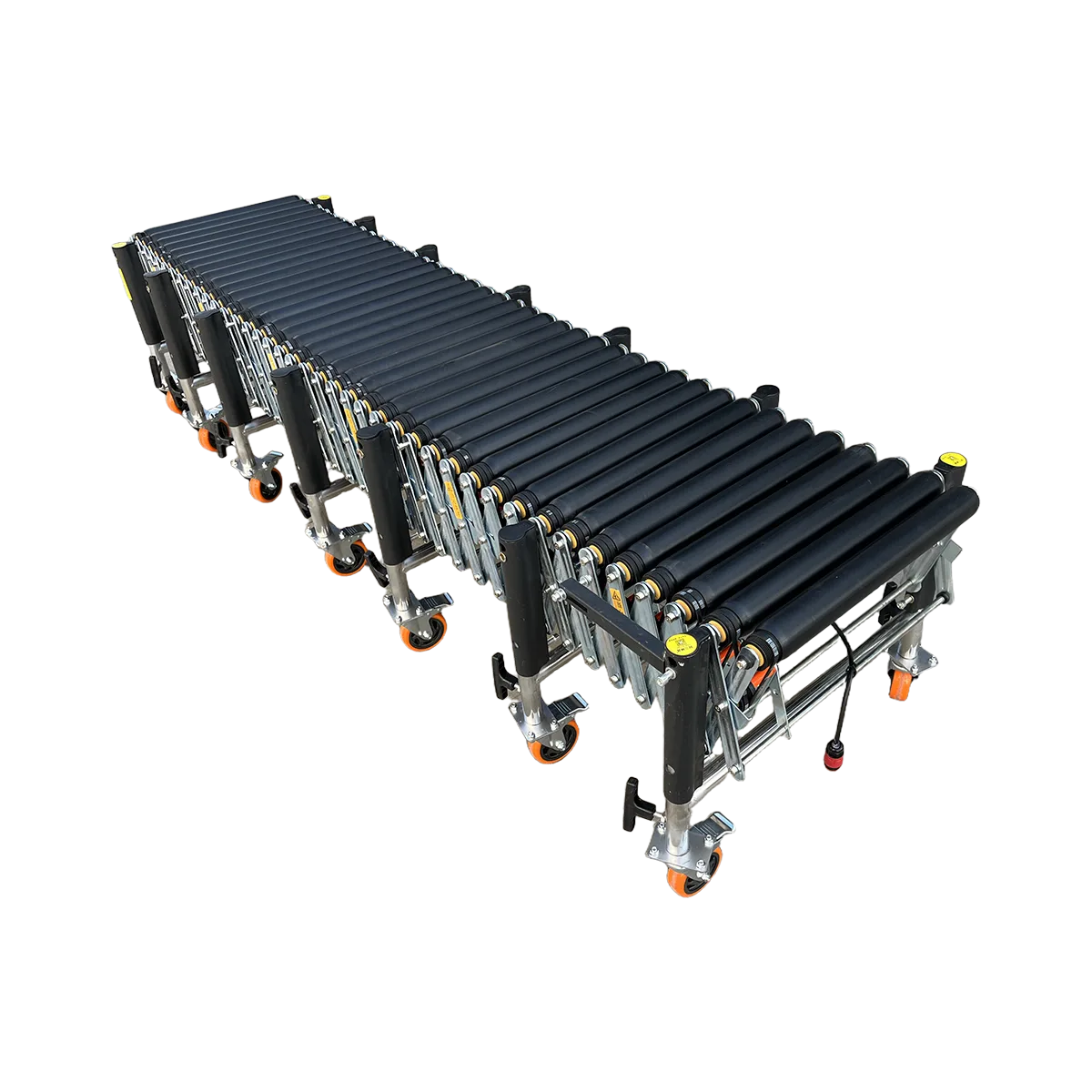

Eliminating Package Slippage
The primary advantage behind rubber-covered rollers involves dramatically improved friction between transport surfaces and challenging package types:
- Bagged materials like rice, flour, grains, or animal feed
- Polished packaging with minimal natural friction
- Irregular bottom surfaces lacking consistent contact points
- Heavy sacks prone to momentum shifts during transport
- Flexible containers that conform unpredictably under weight
Food processing operations particularly value this slip-prevention capability. Their systems transport heavy bags of ingredients or finished products without the directional instability or unpredictable movement common with standard metal rollers throughout production environments.
Enhanced Load Handling
Beyond slippage prevention, rubber coverings deliver several secondary advantages:
| Feature | Operational Benefit | Application Example |
| Vibration dampening | Reduced product shifting | Fragile goods transport |
| Noise reduction | Improved workplace environment | Food processing facilities |
| Shock absorption | Protected package contents | Chemical processing |
| Increased friction coefficient | Steeper incline capability | Space-constrained facilities |
| Gentle handling | Reduced package abrasion | Finished goods movement |
Agricultural product processors appreciate these characteristics when moving heavy bags of seeds, grains, or fertilizers throughout production facilities. Their operations maintain package integrity while preventing the sliding or alignment problems that plague standard roller systems handling similar materials.
Heavy-Duty Performance Specifications
Rubber roller conveyors deliver impressive performance characteristics handling demanding loads:
- Substantial load capacity (120 kg/meter) handling heavy bagged materials
- Consistent operating speed (40 m/min) regardless of package characteristics
- Robust drive system (multi-wedge belt) providing reliable power transfer
- Expandable design (560 mm collapsed to 1100 mm extended) offering deployment flexibility
- Durable construction (galvanized/stainless steel with rubber coating) ensuring extended service life
These performance specifications create exceptional material handling capabilities throughout demanding industrial environments. Facility managers confidently process challenging loads knowing rubber roller systems maintain continuous product flow despite difficult cargo characteristics throughout daily operations.
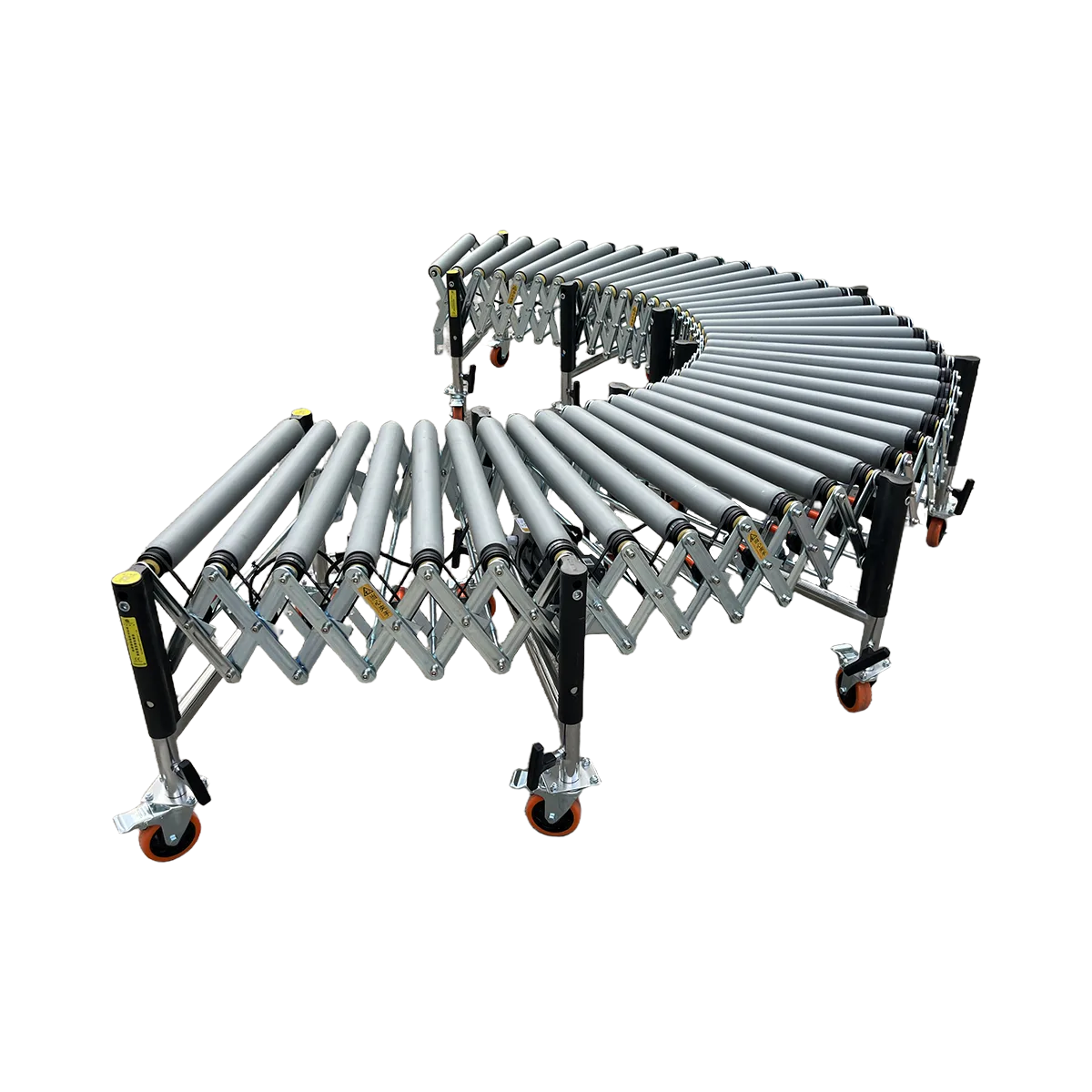

Specialized Applications for Challenging Materials
Different industrial scenarios showcase rubber roller conveyor advantages through perfect alignment with challenging cargo requirements.
Agricultural Product Processing
Farm operations and agricultural processing facilities handle numerous materials ideally suited for rubber roller transport:
Grain and Seed Handling Applications involve transporting heavy bags that frequently shift during movement. Standard metal rollers struggle maintaining directional stability as these packages travel, often causing jams or alignment issues during transport. Rubber rollers maintain consistent friction with bag surfaces ensuring smooth movement regardless of weight variations or shifting contents throughout conveyor pathways.
Fertilizer Packaging Operations process heavy sacks with variable weight distribution creating challenging transport conditions. Their rubber conveyor systems maintain positive contact with package surfaces preventing the sliding or hesitation common with standard rollers handling similar materials. Production facilities report substantially improved throughput after implementing rubber roller technology within packaging operations.
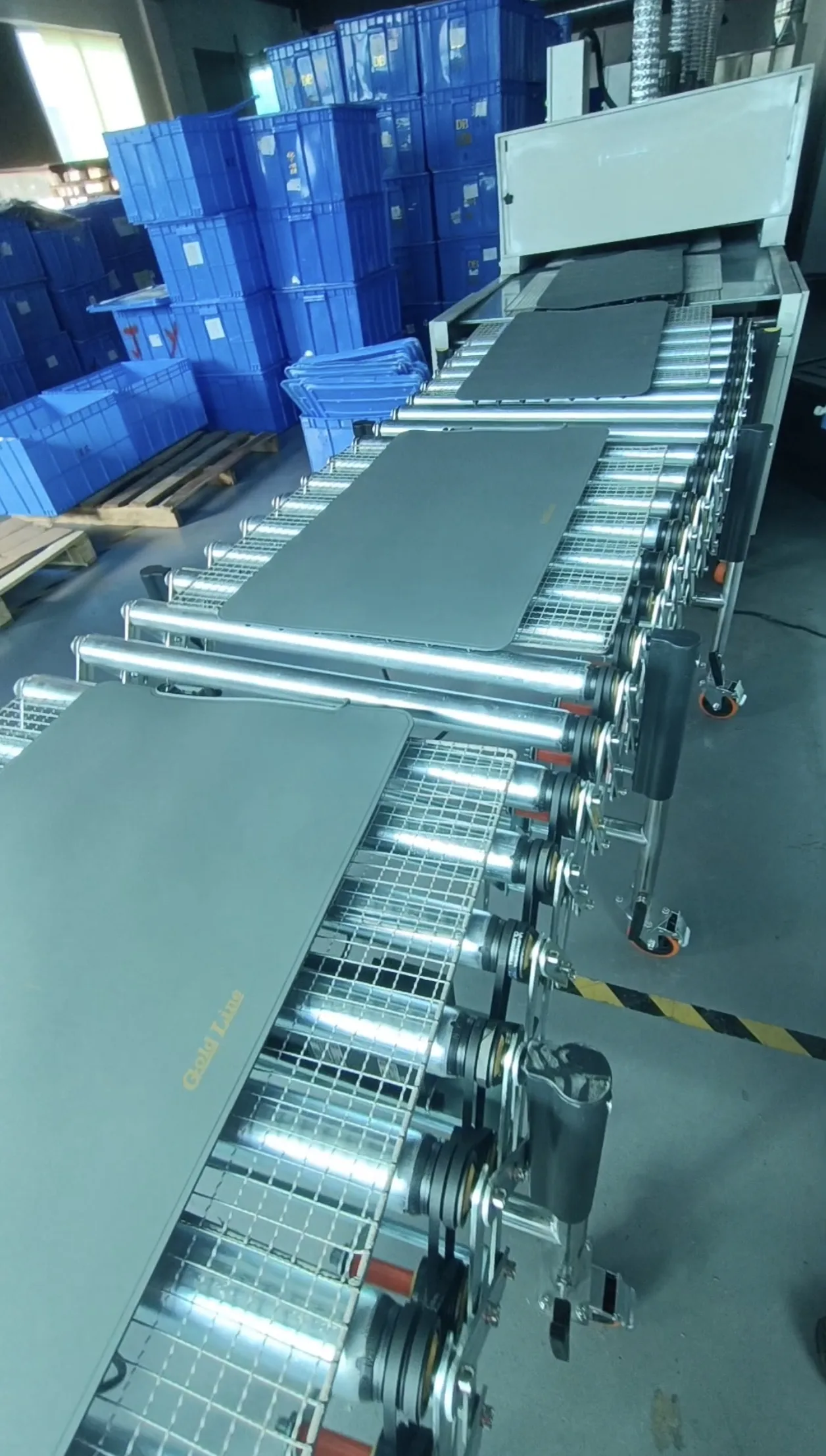

Animal Feed Production involves moving flexible bags containing various feed mixtures throughout manufacturing facilities. These packages frequently conform unpredictably under their own weight creating inconsistent bottom surfaces challenging standard transport systems. Rubber rollers accommodate these variations maintaining continuous movement despite package irregularities throughout production environments.
Food Manufacturing Excellence
Food production facilities benefit tremendously from rubber roller conveyor capabilities handling various challenging materials:
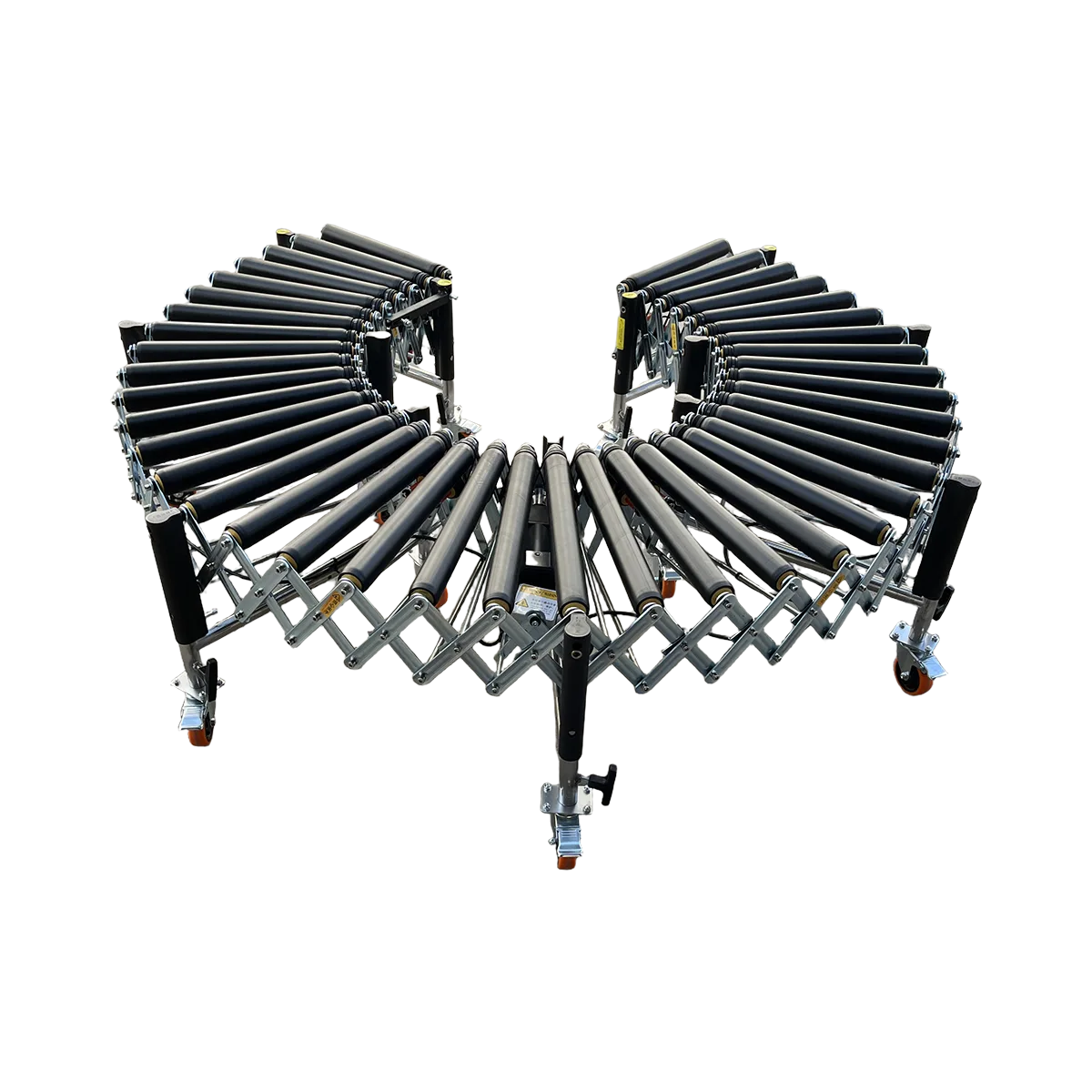

Flour and Baking Ingredient Transport involves moving heavy bags with contents that shift during handling. Bakeries report exceptional performance improvements after implementing rubber roller systems within ingredient handling areas. Their operations maintain continuous production flow without the interruptions commonly experienced with standard rollers transporting similar materials throughout food preparation environments.
Rice and Grain Processing represents perfect application scenarios for rubber roller technology. These heavy bagged products typically slide unpredictably across standard metal rollers creating alignment problems or complete stoppages during transport. Rubber-covered systems eliminate these challenges through superior surface grip maintaining directional stability regardless of package weight or content distribution.
Sugar and Ingredient Handling within confectionery operations benefits from enhanced traction during transport between production stages. Rubber rollers prevent package slippage while maintaining precise positioning throughout manufacturing processes. Production managers appreciate reduced interruptions while maintaining optimal workflow throughout candy and confection production facilities.
Chemical Processing Applications
Industrial chemical operations utilize rubber roller capabilities addressing specific material handling challenges:
Powdered Chemical Transport involves moving heavy bags containing materials requiring careful handling throughout production facilities. Rubber rollers provide controlled movement preventing unwanted sliding or directional instability during transport between processing stages. Facility managers report substantial handling improvements after implementing rubber-covered systems within chemical packaging operations.
Plastic Pellet Packaging operations benefit from enhanced traction when moving finished product sacks between production and shipping areas. These heavy bags frequently slide across standard metal rollers creating alignment issues throughout transportation paths. Rubber systems eliminate these challenges while maintaining appropriate handling characteristics throughout petrochemical processing environments.
Agricultural Chemical Distribution facilities handle numerous bagged products benefiting from rubber roller transport capabilities. Their operations maintain efficient product flow between storage and shipping areas without the directional problems or alignment issues commonly experienced with standard roller systems handling similar materials throughout distribution environments.
Technical Specifications and Configuration
Understanding detailed performance parameters helps operations managers select appropriate rubber roller configurations meeting specific application requirements.
Multi-Wedge Belt System Specifications
These robust systems deliver exceptional performance handling challenging materials:
Key Specifications:
- Load capacity: 120 kg/meter
- Roller diameter: 54 mm (≥1.5 mm wall thickness)
- Roller spacing: 57 mm between centers
- Extension ratio: 1:3 (560 mm collapsed to 1100 mm extended)
- Weight: 30-39 kg depending on width selection
- Power requirements: One 120W reducer per section
- Speed: 40 meters/minute (standard configuration)
Available Widths:
- 500 mm roller width (600 mm overall machine width)
- 600 mm roller width (760 mm overall machine width)
- 800 mm roller width (960 mm overall machine width)
These dimensions support various package sizes while maintaining consistent performance characteristics throughout operational deployment within demanding industrial environments processing challenging materials requiring enhanced handling capabilities.
Control and Operational Features
Sophisticated controls deliver precise operational management:
- Forward/Reverse operation supporting bidirectional material flow
- Emergency stop functionality enhancing workplace safety
- Variable speed adjustments through frequency converter technology
- Leakage protection ensuring electrical safety throughout operation
- Heavy-duty casters supporting mobility requirements between deployment locations
These control features transform specialized material handling into intelligent product movement systems. Operations managers coordinate conveyor functions with broader facility requirements while maintaining precise control throughout challenging product handling processes within industrial environments.
Integration Considerations
Connecting rubber roller conveyors with complementary equipment requires careful planning addressing several operational factors:
- Control system compatibility between different equipment manufacturers
- Transfer point optimization ensuring smooth product transitions
- Speed synchronization between consecutive handling sections
- Height alignment maintaining consistent product flow
- Appropriate incline angles considering enhanced traction capabilities
Comprehensive integration planning prevents operational disconnects between different material handling components while ensuring seamless product flow throughout complete system configurations regardless of challenging material characteristics or handling requirements.
Implementation Best Practices
Maximizing rubber roller conveyor benefits requires thoughtful implementation strategies aligned with operational requirements and facility characteristics.
Application Assessment
Before selecting equipment, carefully evaluate:
- Package bottom characteristics determining friction requirements
- Weight distribution patterns within transported items
- Flexibility factors affecting package conformity during transport
- Environmental conditions impacting rubber performance
- Integration requirements with existing systems
- Speed and throughput expectations driving operational efficiency
This thorough assessment prevents purchasing inadequate systems or overspending on unnecessary capabilities. Experienced operations managers compare requirements against equipment specifications ensuring perfect alignment with organizational needs handling challenging materials throughout industrial environments.
Layout Optimization
Strategic conveyor placement dramatically impacts overall handling efficiency:
- Minimize directional changes whenever possible (straight paths optimize flow)
- Provide adequate spacing between parallel lines (minimum 800 mm for maintenance access)
- Consider load patterns when planning system capacity
- Establish proper transfers between connecting conveyors
- Allow sufficient accumulation zones preventing workflow bottlenecks
Well-designed layouts reduce transport friction while maximizing throughput capacity. Even minor adjustments often yield substantial productivity improvements throughout material handling systems processing challenging cargo throughout industrial environments.
Maintenance Planning Requirements
Proactive maintenance strategies significantly extend equipment lifespan while ensuring consistent operational reliability:
| Maintenance Activity | Frequency | Personnel Requirements |
| Belt tension verification | Weekly | Basic technician |
| Roller inspection | Monthly | Basic technician |
| Drive motor assessment | Quarterly | Electrical technician |
| Rubber surface examination | Quarterly | Mechanical technician |
| Control system testing | Quarterly | Electrical technician |
| Comprehensive lubrication | Bi-annually | Mechanical technician |
Establishing regular maintenance schedules prevents unexpected failures while maximizing operational reliability throughout extended service periods. Most activities require minimal technical expertise while delivering significant performance benefits through consistent preventative attention handling challenging materials throughout industrial environments.
Real-World Success Applications
Actual implementations demonstrate exceptional rubber roller conveyor value across diverse operational scenarios.
Rice Processing Facility Transformation
Major rice processor struggled with continuous flow interruptions when moving heavy bagged finished product between packaging and palletizing stations. Standard metal rollers couldn’t maintain reliable movement as 25 kg rice bags frequently slid sideways or stalled during transport creating production bottlenecks throughout daily operations.
After implementing rubber roller conveyors, results proved remarkable:
- Production interruptions decreased 87% compared with previous configuration
- Package alignment problems virtually eliminated throughout transport
- Throughput capacity increased 35% without additional equipment
- Worker intervention requirements dramatically reduced
Management reported complete resolution of slippage problems that previously plagued operations while maintaining reliable product flow regardless of bag size or weight variations throughout processing cycles.
Agricultural Supply Distribution Center
Regional agricultural supplier faced significant challenges moving bagged fertilizer, seed, and animal feed products throughout their distribution facility. These heavy sacks consistently created handling problems sliding unpredictably across standard conveyor systems resulting in frequent jams requiring constant worker intervention.
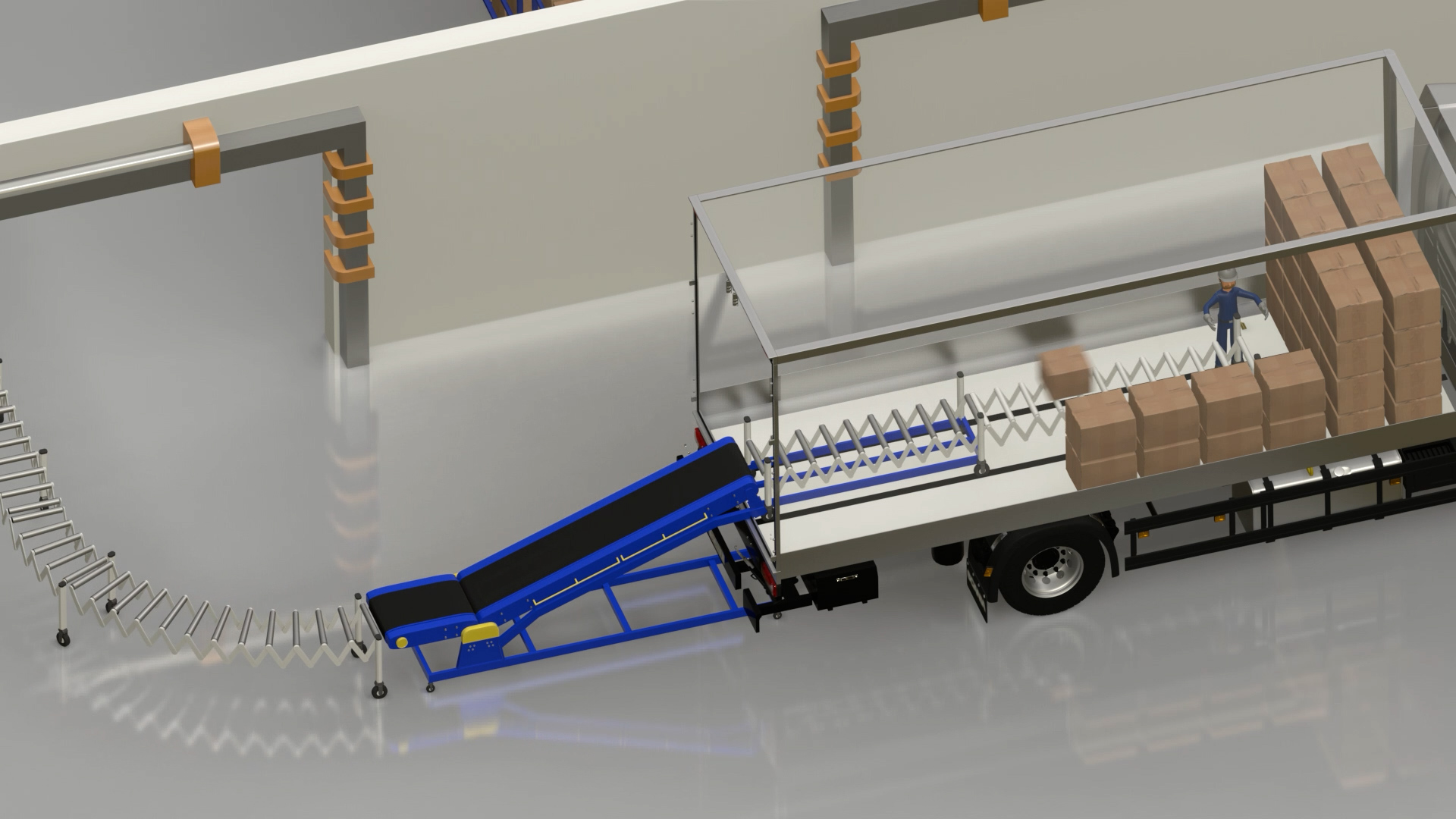

Their rubber roller conveyor solution delivered impressive performance improvements:
- Handling interruptions reduced over 90% throughout daily operations
- Labor requirements decreased 2.8 full-time positions
- Product damage from handling incidents declined significantly
- Customer order fulfillment cycle times improved substantially
Distribution managers particularly valued consistent performance regardless of package type or content characteristics. Their rubber roller investment delivered rapid return through operational improvements handling previously problematic materials throughout distribution processes.
FAQ
What makes rubber roller conveyors different from standard systems? Rubber-covered rollers provide substantially enhanced friction between transport surfaces and challenging package types. This increased traction prevents slippage problems common with metal rollers handling bagged materials, polished packaging, or irregular bottom surfaces throughout material handling processes within industrial environments.
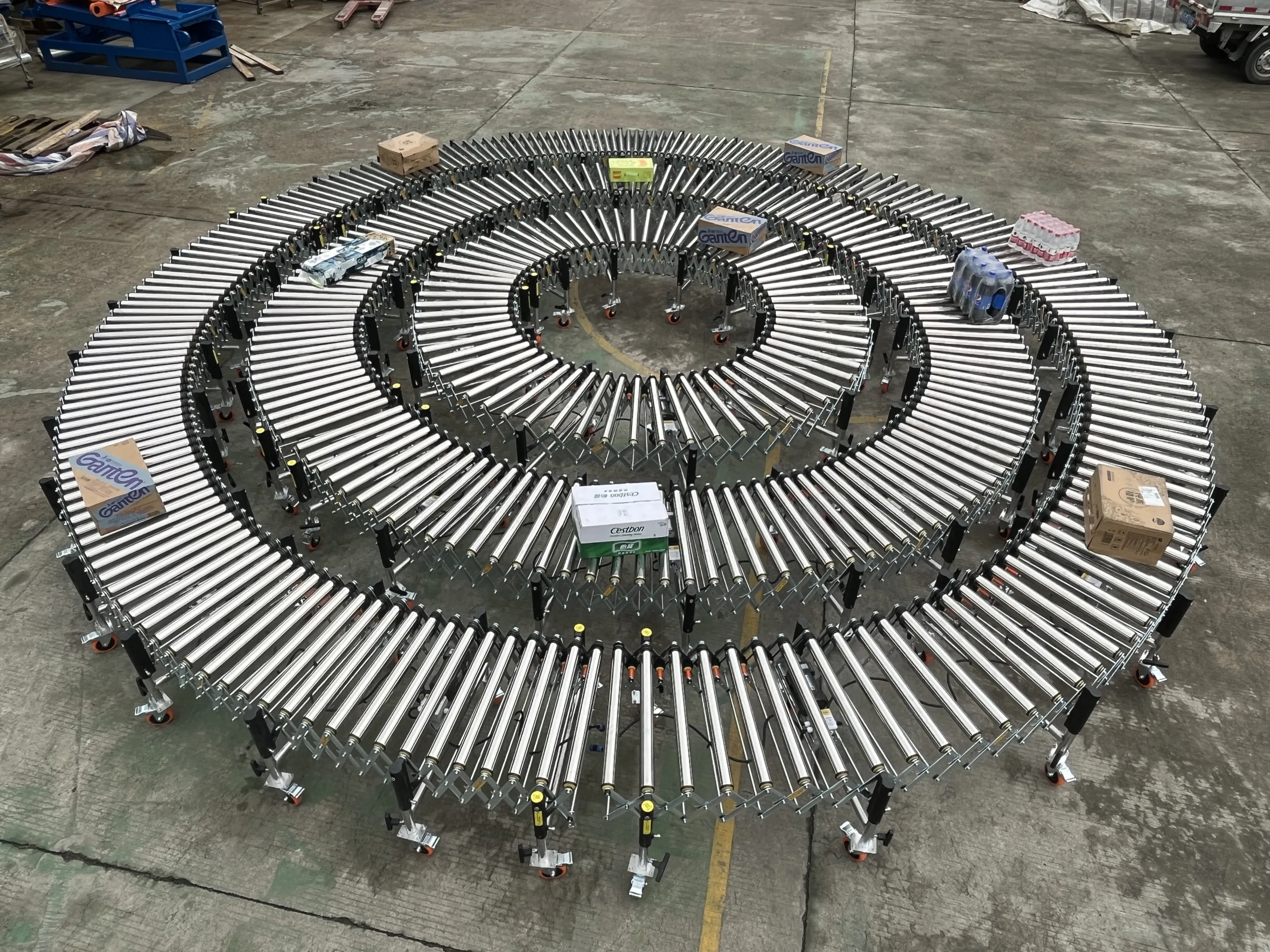

Which materials benefit most from rubber roller conveyor handling? Bagged products like rice, grains, flour, animal feed, fertilizer, chemicals and other heavy flexible packages perform exceptionally well on rubber systems. Their enhanced traction prevents sliding problems while maintaining directional stability regardless of package weight or content distribution throughout transport processes within manufacturing environments.
How much weight can rubber roller conveyors handle? Standard systems support 120 kg/meter handling substantial loads throughout industrial applications. This impressive capacity accommodates heavy bagged materials while maintaining reliable performance regardless of package characteristics throughout production and distribution environments processing challenging cargo types.
What maintenance do rubber roller systems require? Regular preventative attention includes weekly belt tension verification, monthly roller inspection, quarterly surface examination plus periodic comprehensive lubrication maintaining optimal performance. This modest investment prevents costly emergency repairs while maximizing system uptime throughout extended service periods handling demanding materials throughout industrial operations.
Can rubber roller conveyors handle inclines better than standard systems? Absolutely! Their enhanced friction coefficient creates superior gripping capability supporting steeper inclines without package slippage problems. This characteristic proves particularly valuable within space-constrained facilities where minimal horizontal distance requires increased angle achieving necessary elevation changes throughout material handling systems.
